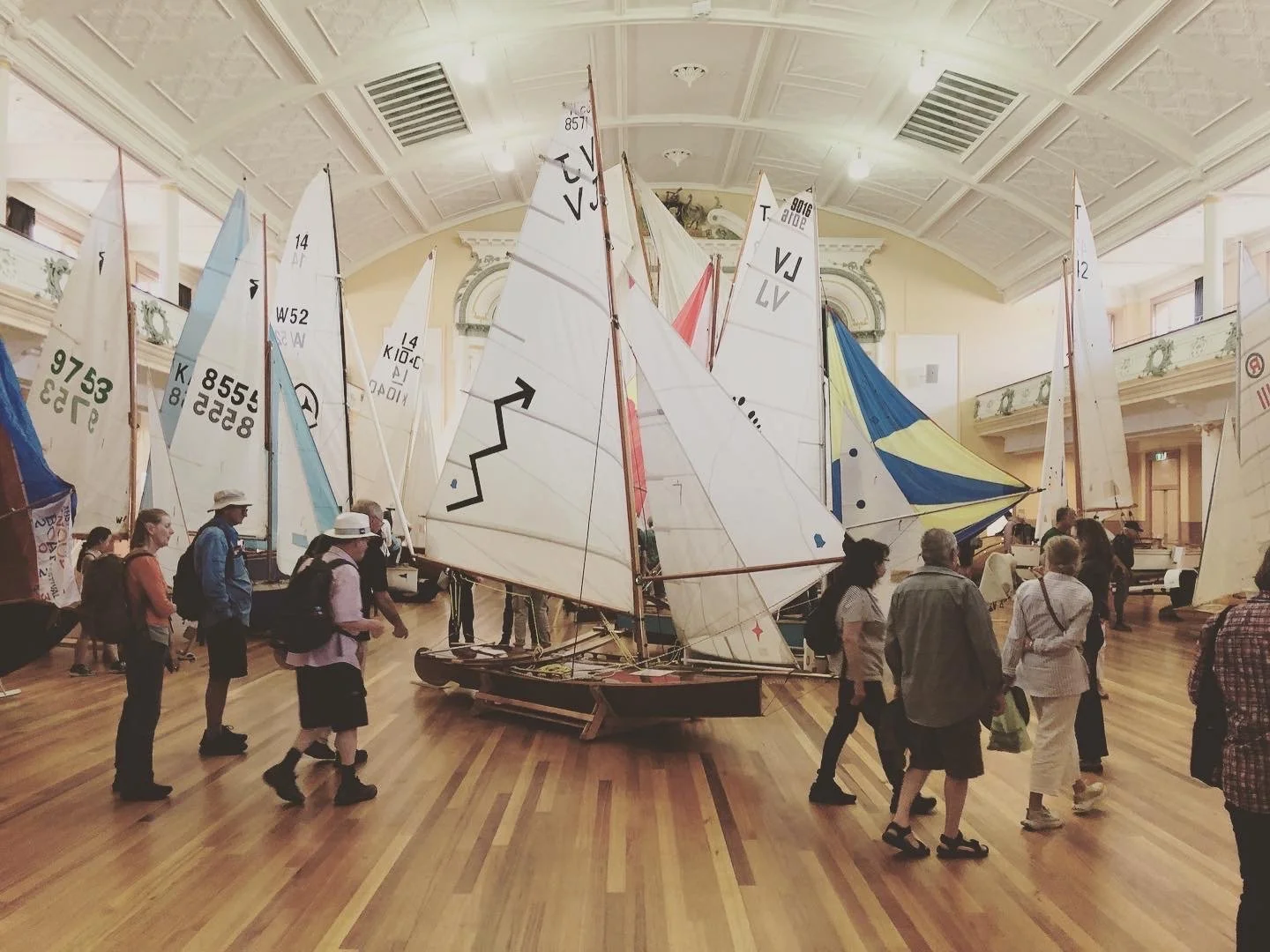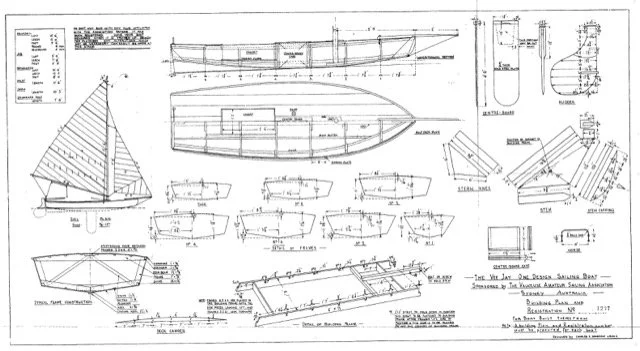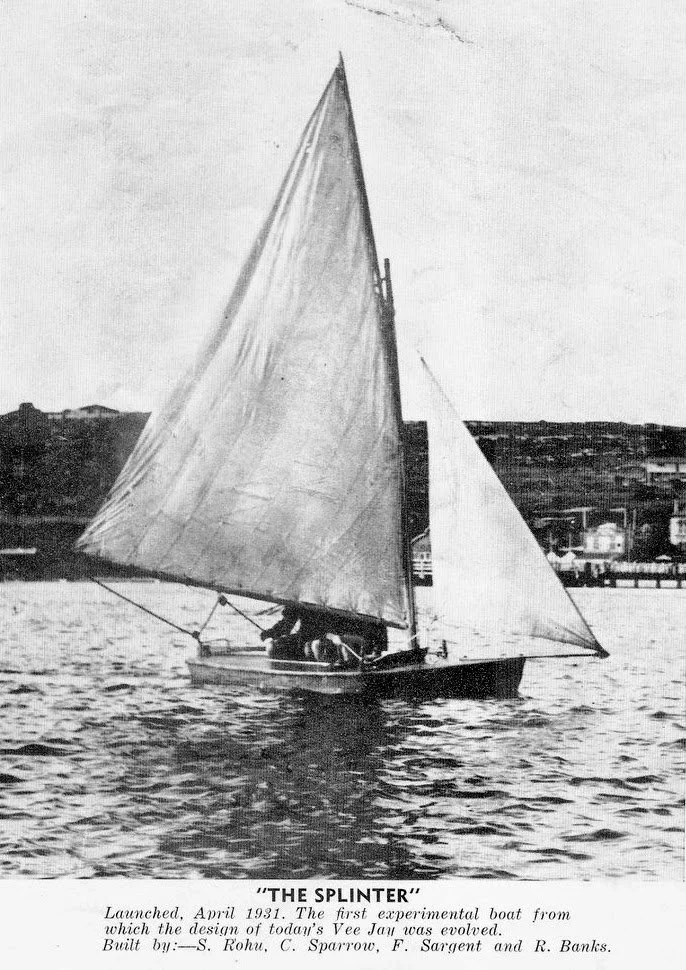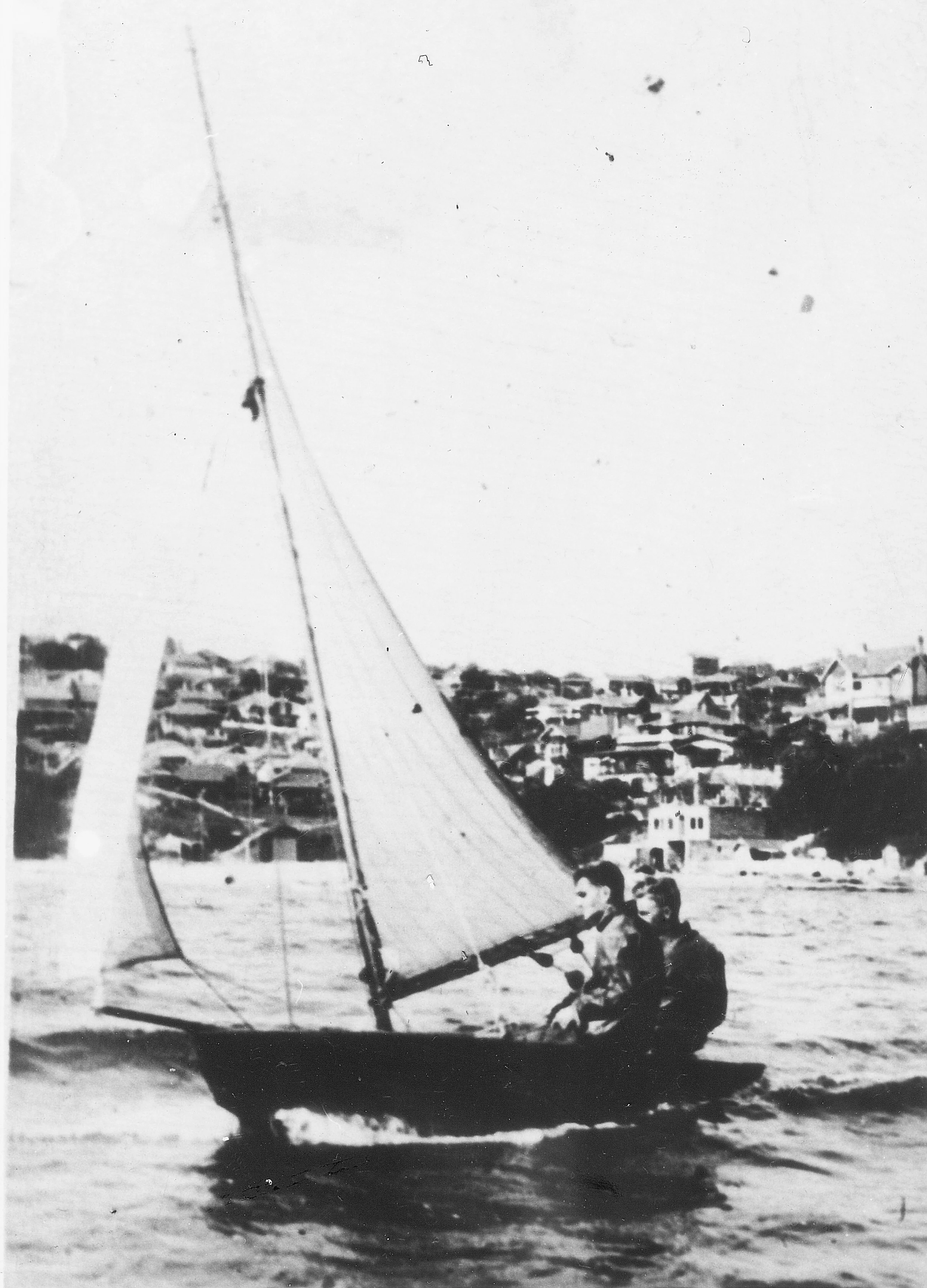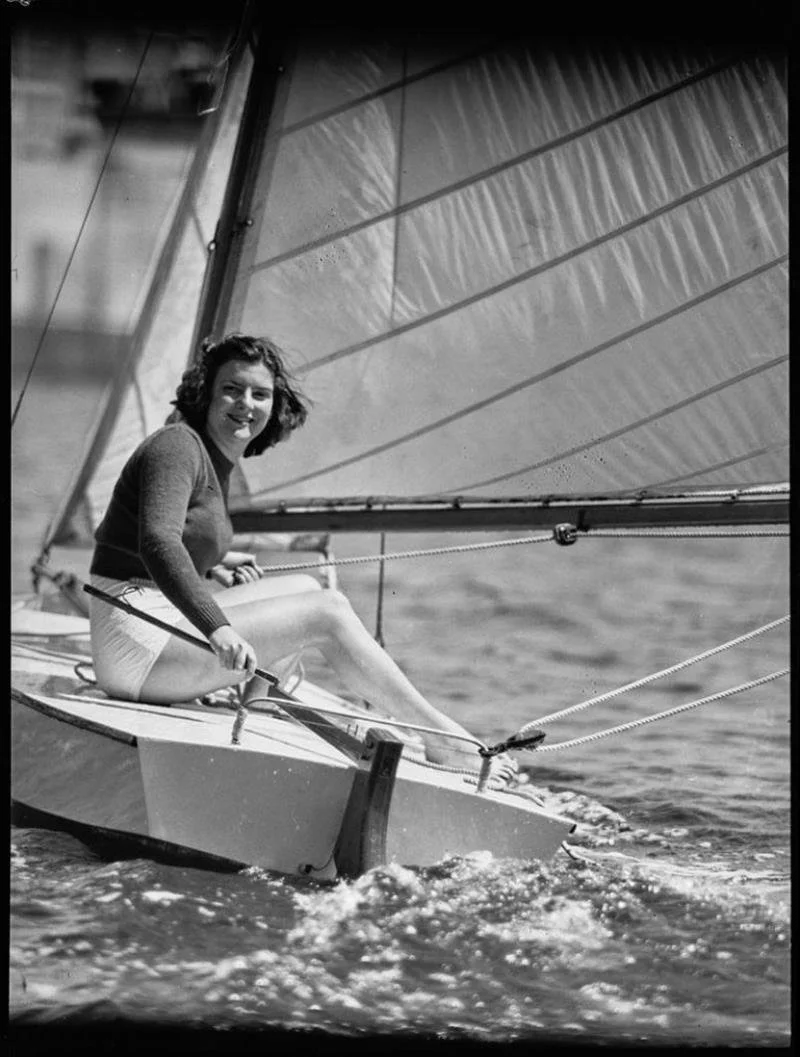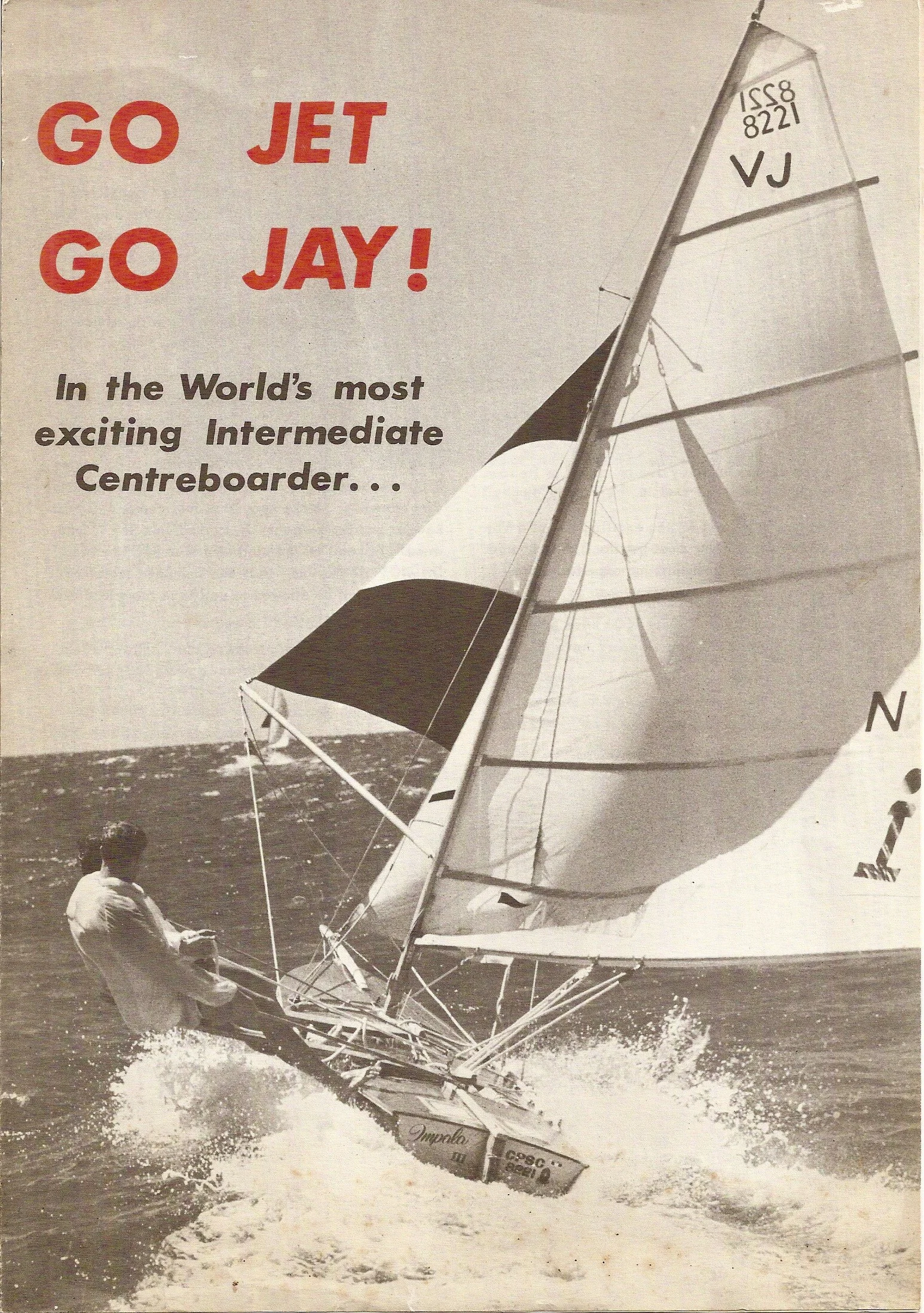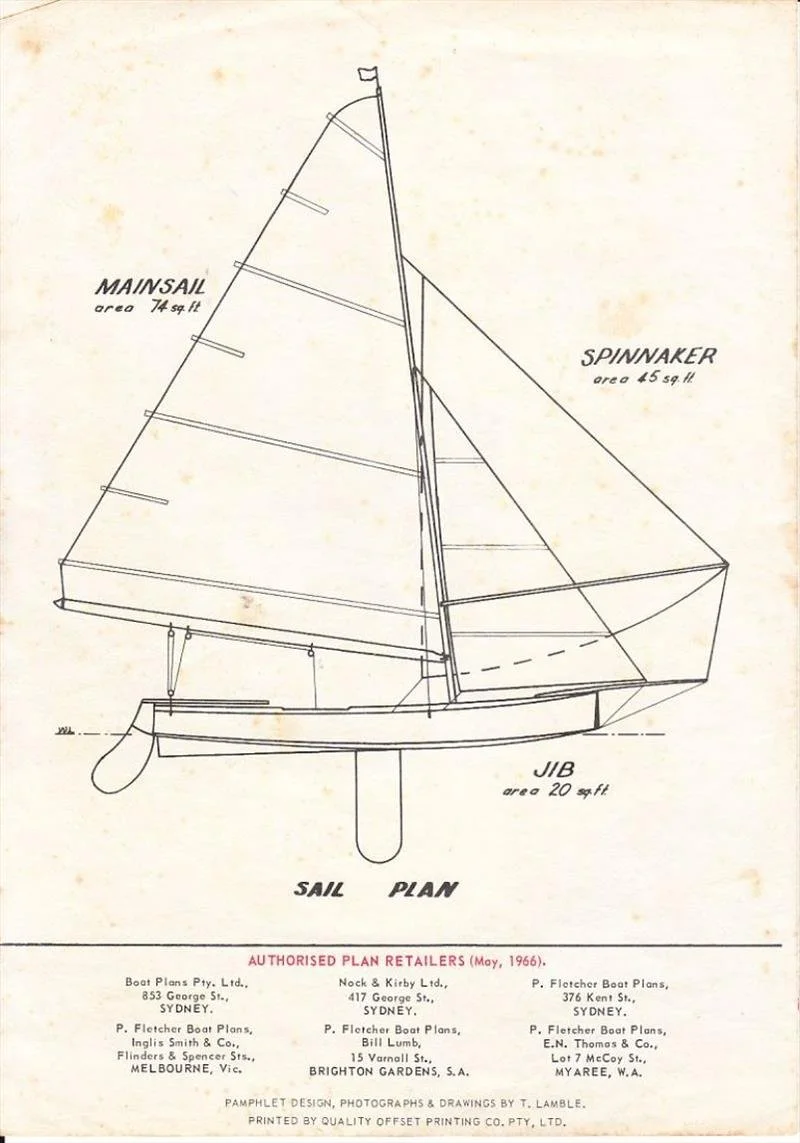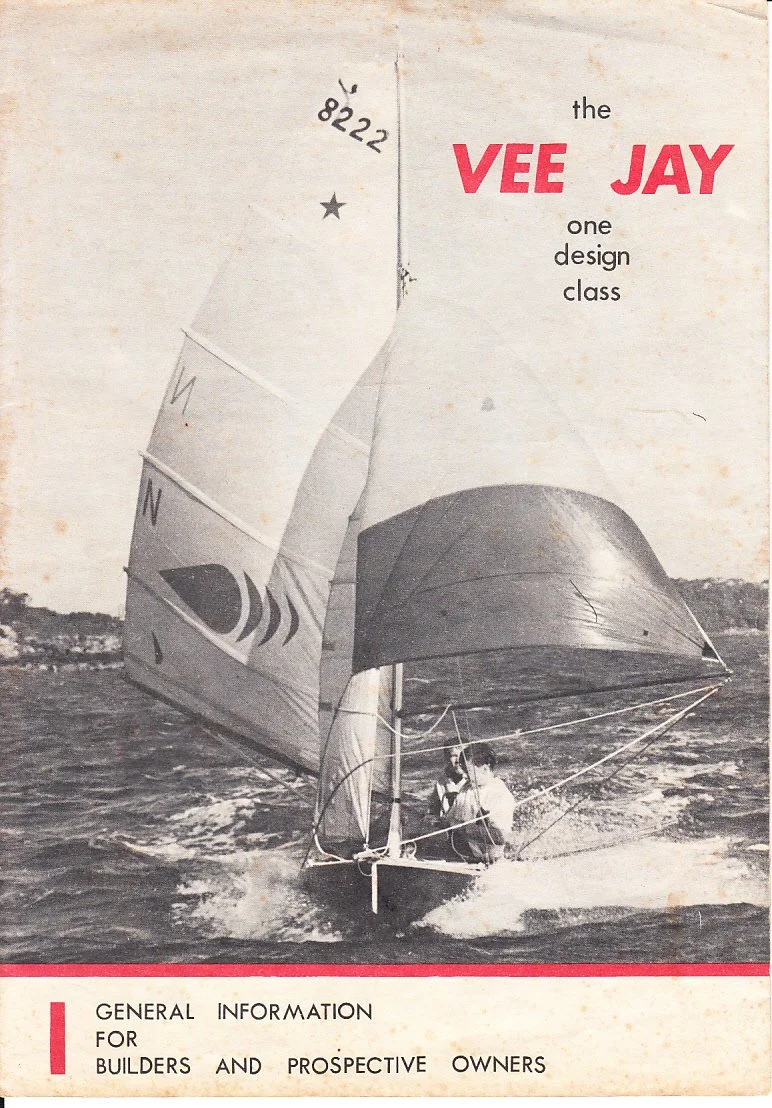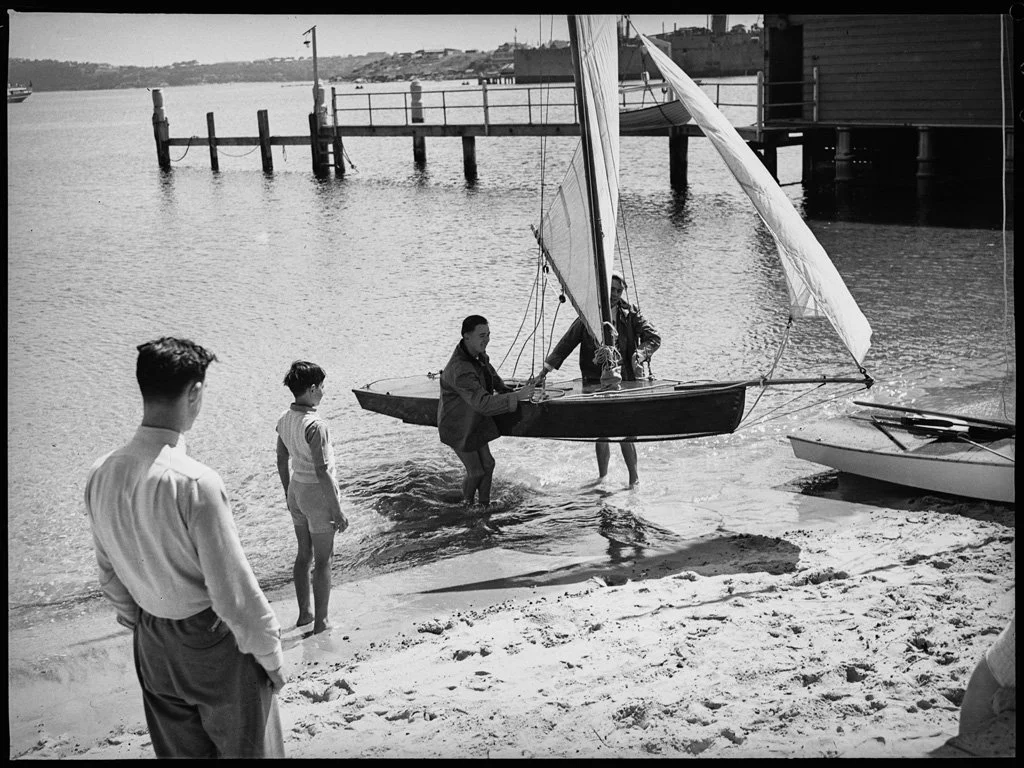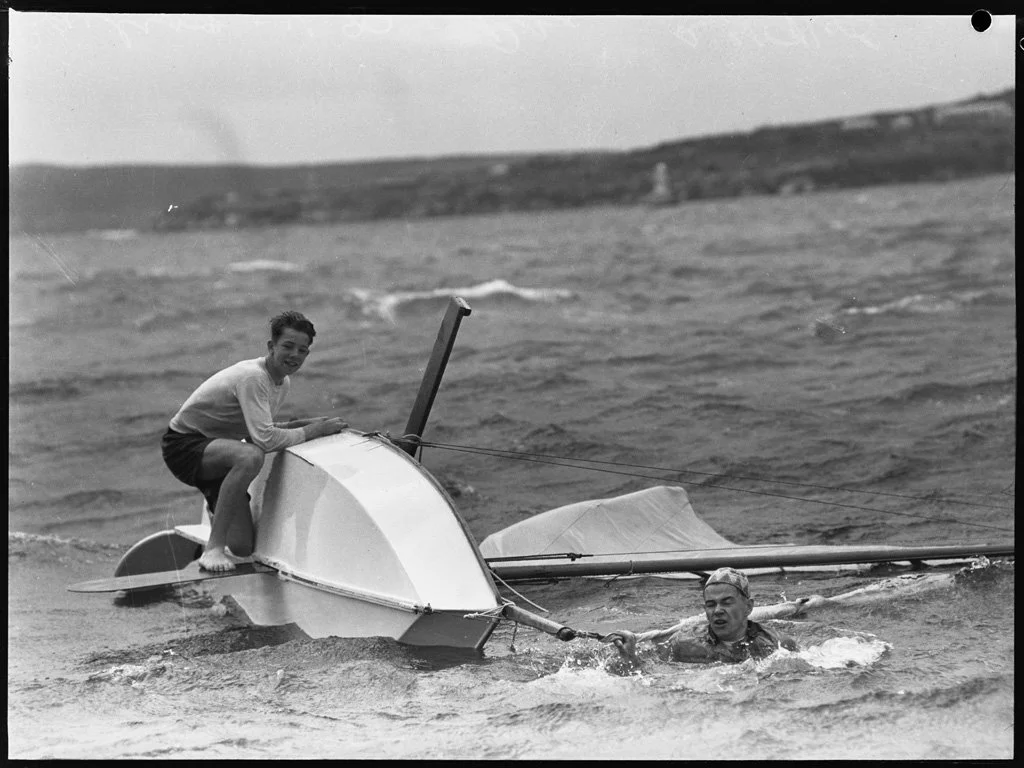To be made at home by a boy and his Dad
Vee-Jay dinghy - photo Byron Georgouras
A couple of weeks ago we published a reminiscence of life on Pittwater in the 1960’s and 70’s by Malcolm Lambe. Amongst other things, he told of his time sailing VJ’s at The Bayview Yacht Racing Association
Just recently at the AWBF, one of these seminal craft was on display, fully rigged in City Hall, Hobart, and so in seemed like a great opportunity to go back and take a look at the history of the “Vaucluse Junior”, and who better tell the story than Greg Fryer the class measurer and publicity officer.
The City Hall dinghy display at the 2023 AWBF with VJs in foreground.
Greg writes…
The Vaucluse Junior or VJ, is one of the great icons of Australian sailing. The VJ according to marine historian Graeme Andrews, changed the sailing scene in Australia radically and immediately, and its effect has been felt for generations since the boat’s introduction in August 1931.
The VJ was the concept of Sylvester (Sil) Rohu who was a founding member of the Vaucluse 12 ft Amateur Sailing Club in 1926, and who owned a prominent sporting store in Elizabeth Street Sydney from 1919 until his death in 1945.
Sil Rohu sailed regularly with Charles Sparrow who was 22 years his junior.
Sil was a sailing boat and fishing enthusiast, and his gunsmith and fishing supplies sports store ‘Sil Rohu’ became known throughout the country due to Sil’s entrepreneurial and promotional flair. Charles Sparrow told me in 1994 that Sil would often bring out American film celebrities for deep sea game fishing promotional events and had a knack for this kind of promotion.
Prior to the invention of the VJ there were no sailing boats that were designed specifically for children and teenagers so they could learn to sail. Boys would sometimes learn to sail as ‘bailer boys’ in the open skiff classes, but others would venture out onto Sydney Harbour in home made ramshackle ‘sailing canoes’ made from roofing iron and held together with pitch wood and nails usually with a bedsheet for a sail. These were anything but seaworthy and had mixed results, and Sil was concerned by the lack of formal sailing activites for children and teenagers and also by the lack of suitable boats for them to learn to sail on.
During a short period of illness in 1931, Sil crystallised his vision for a sailing boat which would be designed specifically for children and teenagers as a training and racing craft.
Sil Rohu’s vision for the VJ required 3 things:
It was purposely designed for 2 children or teenagers so they could learn to sail and learn to race
The boat would be unsinkable and easy to right after a capsize (most other craft at the time such as the open skiffs had to be towed ashore after a capsize)
The boat would be made at home by a boy and his Dad and would be inexpensive to construct (in the 1930s the boat cost 5 pounds 7 shillings and sixpence, and the sails cost 3 pounds 5 shillings)
In 1931 during the depths of the Great Depression Sil saw all around him the effects of social upheaval. Work was scarce with over 20% of Sydney’s workers unemployed, and poverty and hardship was everywhere around. This must have been disturbing for a community minded man like Sil Rohu.
Charles Sparrow said in a conversation with me in 1994 that Sil was very concerned that the boys and teenagers had little to do with their time during the Great Depression and that lack of activities and structure was causing many social problems. Charles said that it was Sil’s goal that the VJ should be built at home for a low cost and that family and social cohesion would be strengthened by the boys being actively involved in an organised healthy outdoor sport.
Charles Sparrow was unemployed at the time he designed the VJ in 1931, with his shipwright apprenticeship at the Cockatoo Island Dockyards coming to an end in 1928. He had several jobs from 1928 until 1931 including State Dockyard Newcastle, Morts Dock in Sydney, Australian Steam Navigation Company, and Holden Body Builders.
After Sil commissioned him to design the boat, Charles took only 7 days to produce the final drawings. In a generous gesture, Charles donated the money earned from his design to the Vaucluse Junior Amateur Sailing Club.
Charles Sparrows VJ Plan no. 1237
The first VJ prototype called ‘Splinter’ was built in the clubhouse of the Vaucluse 12 ft Amateur Sailing Club by members Sil Rohu, Charles Sparrow, Frank Sargent and R. Banks and was launched on 1st May 1931. It proved to be a little ‘tippy and unstable’ as Charles told me. He then widening the chines by one inch either side to arrive at the final design.
The final version prototype called ‘Chum’ was again built by Sil Rohu, Charles Sparrow, Frank Sargent and R Banks in the Vaucluse 12 ft Amateur Sailing Club clubhouse and was launched in August 1931. Frank Sargent and R. Banks were instrumental in the building of these first two prototype VJs and presumably were experienced in workworking, along with Charles who was an experienced shipwright. Sil Rohu bankrolled the project and paid for the design costs plus all materials for these first two boats from his own pocket.
Charles Sparrow at the helm with brother Tom crewing, sailing the second VJ built, ‘Chum’ on Sydney Harbour at Vaucluse 1932
Charles Sparrow told me 1994 that at the time he designed the VJ, the well known Sydney boatbuilding company Halvorsen Bros was also working on a similar project and showed a prototype at a Boat Show, so therefore the race was on to produce a suitable boat which would capture the public’s imagination.
Once the final prototype VJ ‘Chum’ was launched in August 1931, the idea caught on rapidly and numbers began to grow. Sil named the boat the ‘Vaucluse Junior’ and his concept was that the ‘VJ’ would train the youngsters up to the age of 18 when they would then graduate with accomplished sailing skills into the open 12 ft skiff class or other open skiff classes.
According to Charles it was Sil’s idea for the VJ to have a colour patch or insignia on the mainsail which served to make the boats stand out and be eyecatching when out on the harbour. This has continued to be a distinctive feature of the VJ over the years and one which contributes strong character to the boats. It is likely that Sil borrowed the idea from Mark Foy’s 18ft skiffs which had been using a colour patch on the mainsail as a promotional tool since around the early 1900s as a way of distinguishing the boats when sailing on the harbour and making the sport more interesting for spectators.
The boatshed at Sil’s house at The Crescent Vaucluse served as the first Vaucluse Junior Amateur Sailing Association headquarters, meeting place and storage shed, but soon the numbers of boats being built overcame its capacity. For a few years the VJs were housed in the nearby McKlellan’s boatshed at the south end of Kutti Beach at Vaucluse (the 12 ft Sailing Club was located at the northern end of the beach) and soon a new clubhouse was built nearby.
In October 1939 a new clubhouse in Marine Parade was built for the Vaucluse Amateur Sailing Association’s VJ and VS boats, and was opened by the Postmaster-General Eric Harrison. Construction of the clubhouse was substantially funded by Sil Rohu’s sailing friend Norman Nock who owned the well known George Street Sydney hardware store Nock and Kirby’s.
During the 1940s, 1950s and 1960s the leading Sydney hardware store Nock and Kirby’s sold the VJ plans plus all the materials needed to build the boat.
Many years later the club changed its name to the Vaucluse Yacht Club, where the 90th anniversary of the class was celebrated in 2021
Images thanks to Mitchell Library, State Library of New South Wales and ACP Magazines Ltd.
For much more information on the VJ visit www.vauclusejunior.wordpress.com


